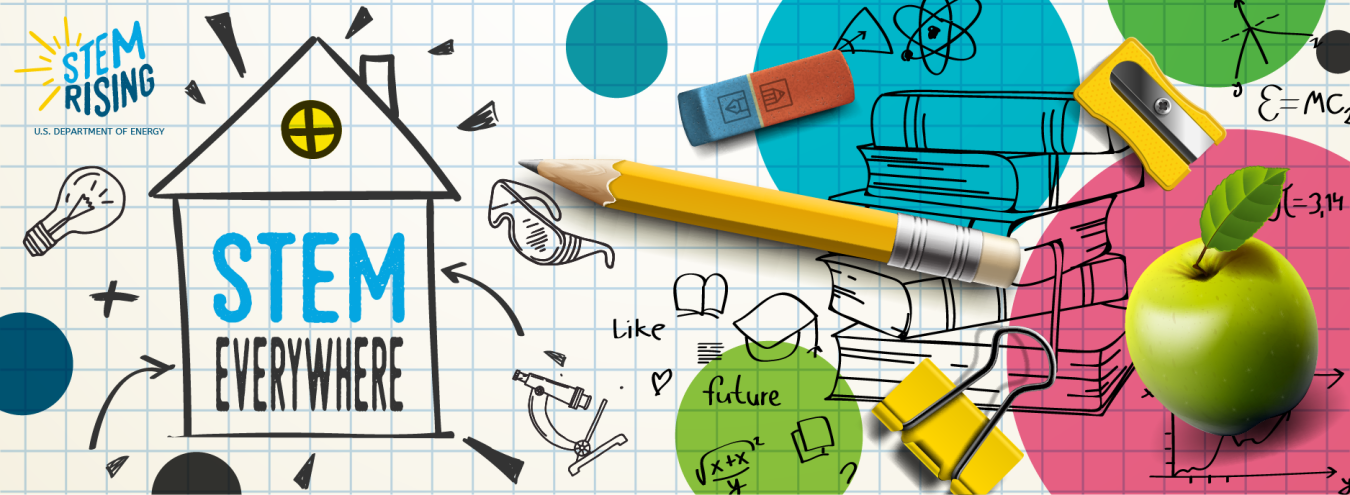Hear from Under Secretary of Science Paul Dabbar about how this pandemic won't stop us from providing world-class STEM education.
September 3, 2020
By Under Secretary for Science Paul M. Dabbar
Back to school means back to STEM at DOE.
There’s no denying this year is different. While we are missing our Science on Saturday lecture series, our STEM summer camps, and opening the doors of our National Laboratories for field trips, we’re not going to let this pandemic stop us from providing world-class scientific educational outreach and STEM workforce development from our National Laboratories and offices.
The 17 National Laboratories and Department of Energy program offices have stepped up to the plate, revamping content and creating original approaches to taking science, technology, engineering, and mathematics outreach virtual in unprecedented ways.
Visit our STEM Rising website to find virtual and at-home STEM learning content today.
A Summer of STEM Outreach
Throughout the summer, the Department of Energy delivered STEM learning content to elementary, middle, high school, college, graduate, and post-doc students, refining techniques and materials along the way. That’s put us in a strong position for the school year, ready to deliver STEM for all learners at all levels.
Picture this: A dozen undergraduate students assembling batteries and electromagnets in their living rooms and bedrooms from kits that had been mailed to them, chatting with others in their small groups online and leaders from the Princeton Plasma Physics Laboratory’s Science Education team. This was the new Undergraduate Workshop in Plasma Physics in late July, reaching underrepresented students in STEM during their first or second year in college to help pave their way to a successful plasma physics career.
Or, picture this: 15 families, sippy cups and toys scattered around them, joining story time with staff from the National Renewable Energy Laboratory, reading On A Beam of Light, then using flashlights, bowls of water, blocks, and toys to explore particles and waves.
Back to School
This fall, and throughout the year, you can find STEM, well, everywhere, with our virtual competitions, conferences, workshops, Lab tours, lessons, activities, videos, chats with scientists, and the list goes on. That’s why we’ve revamped our STEM Rising website for you to explore the ways you can get free resources for your family and participate in exciting events this fall, like the National Science Bowl® regional competitions and the CyberForce Competition™ this November.
Teachers, you can also use STEM Rising to get training, materials, activities, and valuable STEM information for your classrooms, whether they are virtual or in-person.
One example is fifth, sixth, and eighth grade science teachers needing a boost to engage students in the digital classroom can tap into the Jefferson Lab Science Activities for Teachers Program, designed to include more downloadable activities and videos, activity supplies that will be distributed with social distancing practices, and increased program flexibility to adapt to teachers’ realities. The program addresses National Science Education Standards and participants can earn a stipend and recertification points.
We cannot and will not leave a void in our STEM education and workforce development when you need it the most.
Join us in the pathway to STEM inspiration, learning, and jobs and make sure to reach out to our National Laboratory and program office educational teams if you need support. Together, we can advance the STEM workforce of tomorrow.
Paul M. Dabbar

The Honorable Paul M. Dabbar served as the Department’s fourth Under Secretary for Science, He served as the Department’s principal advisor on fundamental energy research, energy technologies, and science, driving this mission through programs including nuclear and high energy particle physics, basic energy, advanced computing, fusion, and biological and environmental research, and direct management over a majority of the Department’s national labs and their world-leading user facilities. In addition, Mr. Dabbar managed the environmental and legacy management missions of the Department, addressing the U.S. legacy of nuclear weapons production and government-sponsored nuclear energy research. In addition, Mr. Dabbar is the lead for technology commercialization activities for the Department and its 17 national labs.
During his time in government service, Mr. Dabbar has traveled to both the North and South Poles. He traveled to the North Pole by submarine to conduct environmental research while in the Navy, and to the South Pole in support of high energy physics astronomy missions by the Department at South Pole Station.
Prior to confirmation as Under Secretary for Science, Mr. Dabbar worked in operations, finance, and strategy roles in the energy sector. As a Managing Director at J.P. Morgan, leading various energy business areas, he has over $400 billion in investment experience across all energy sectors including solar, wind, geothermal, distributed-generation, utility, LNG, pipeline, oil & gas, trading, and energy technologies, and has also led the majority of all nuclear transactions. In addition, he had a senior leadership role for the company’s commodity trading business, including power, oil and gas.
Before joining J.P. Morgan, Mr. Dabbar served as a nuclear submarine officer in Mare Island, California, and Pearl Harbor, Hawaii. He also served on the Department of Energy Environmental Management Advisory Board. He has been a lecturer at the U.S. Naval Academy, and conducted research at the Johns Hopkins University Applied Physics Laboratory. He is also a member of the Council on Foreign Relations.
Mr. Dabbar received a B.S. degree from the U.S. Naval Academy, and a masters degree from Columbia University. Mr. Dabbar and his wife, Andrea, are the parents of two children.

